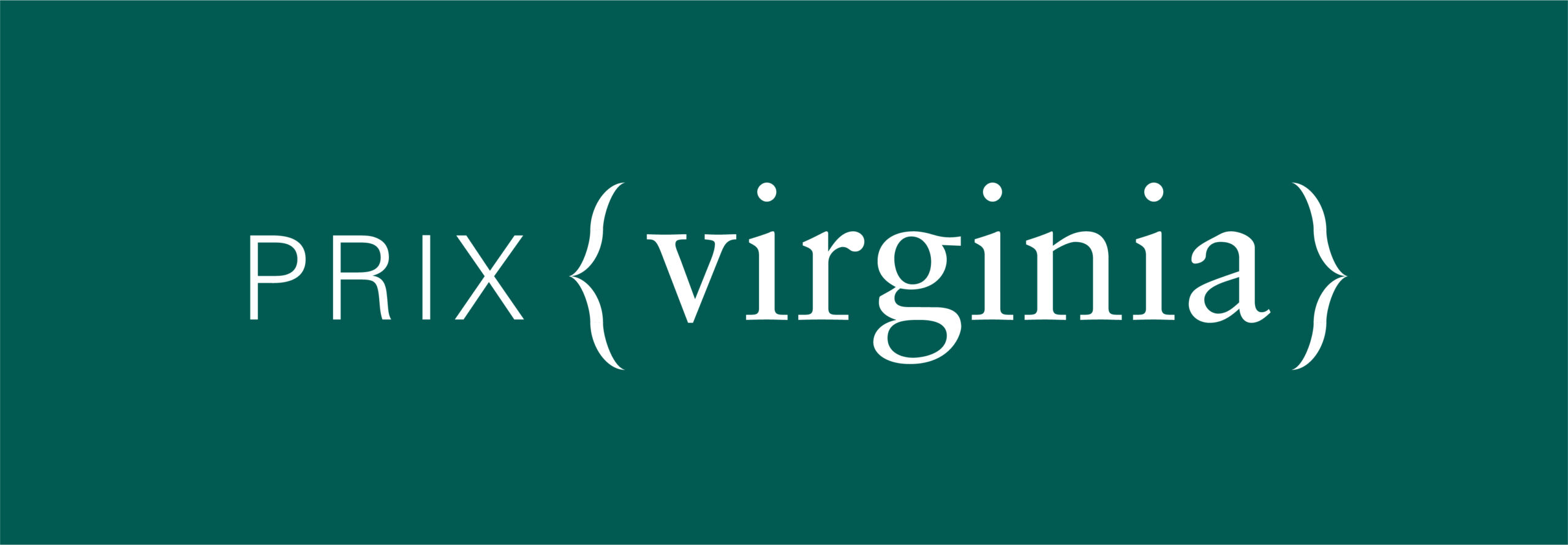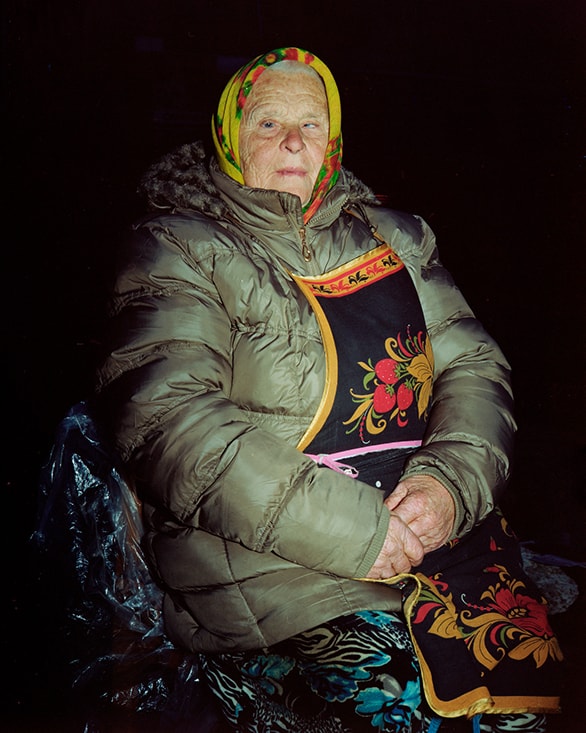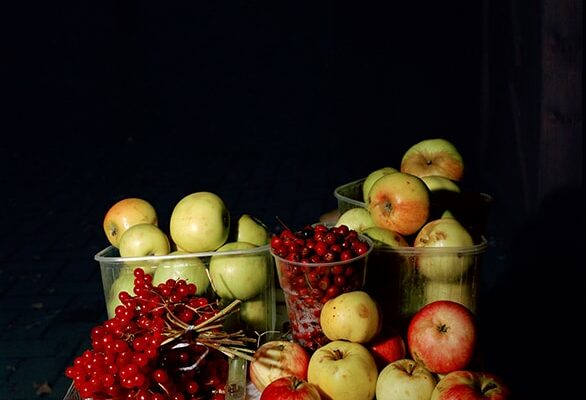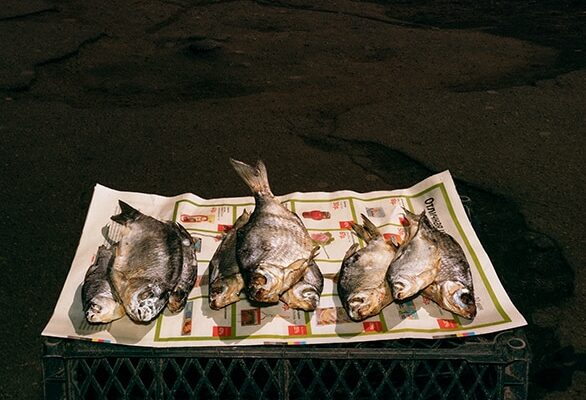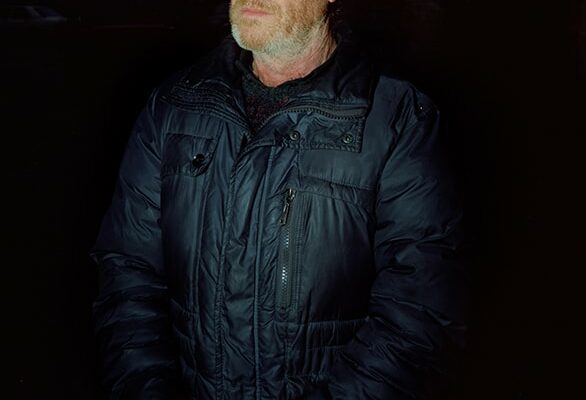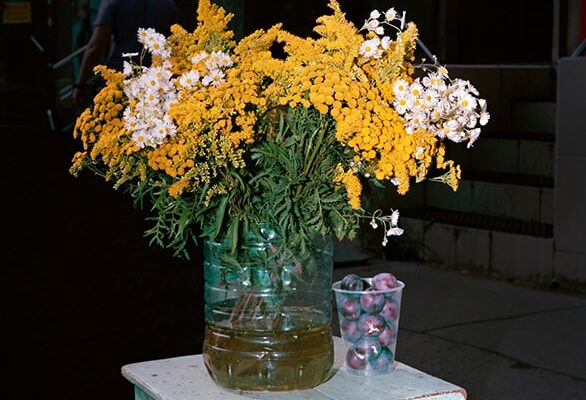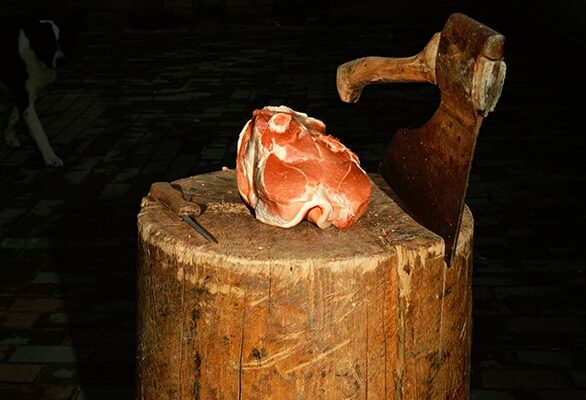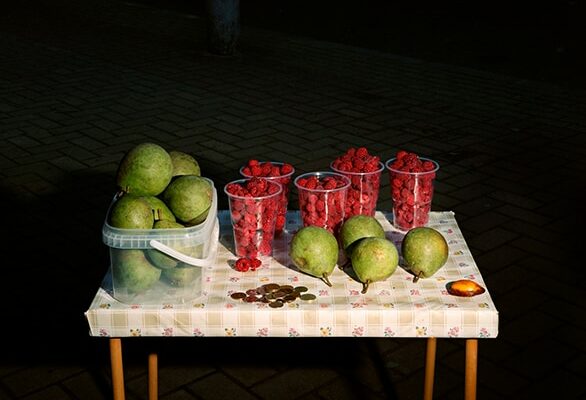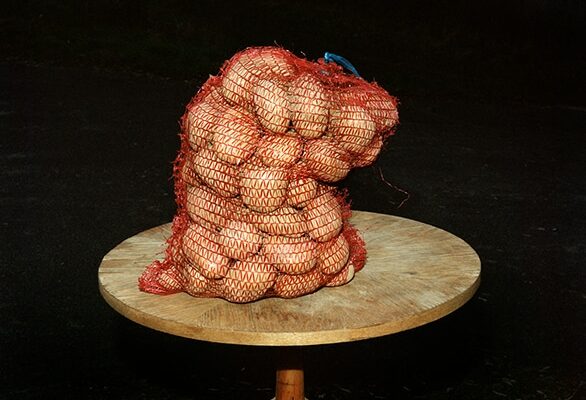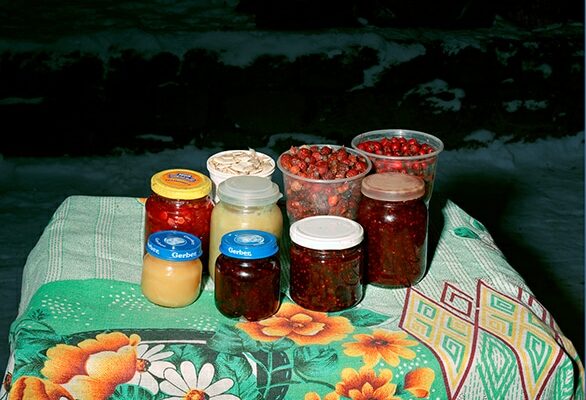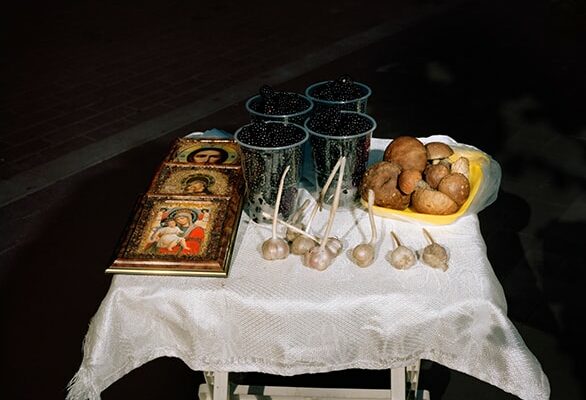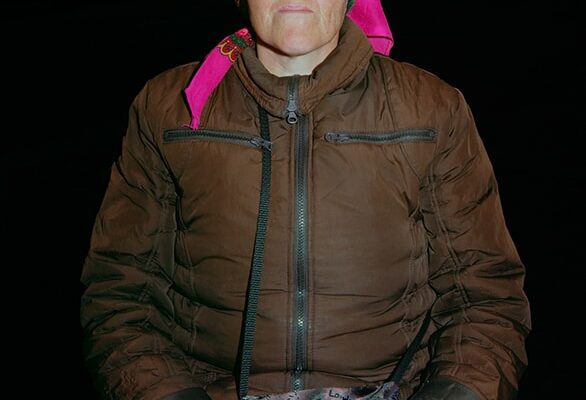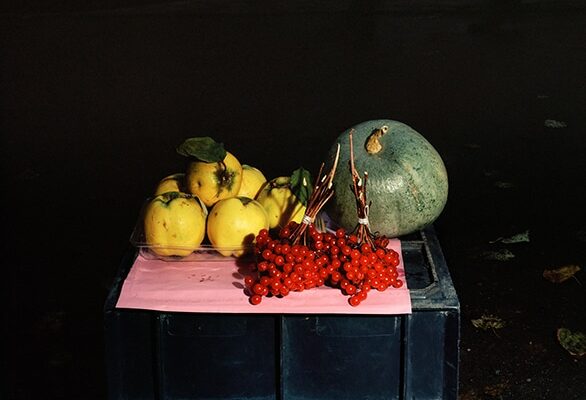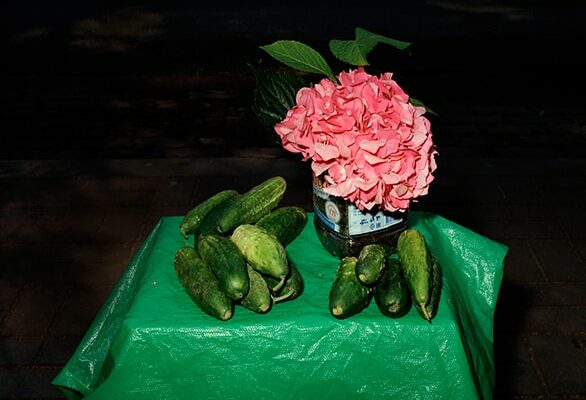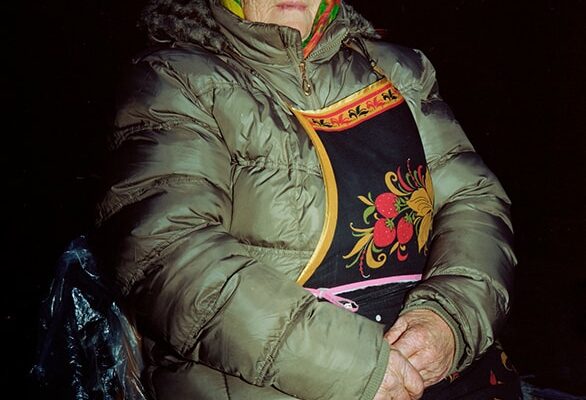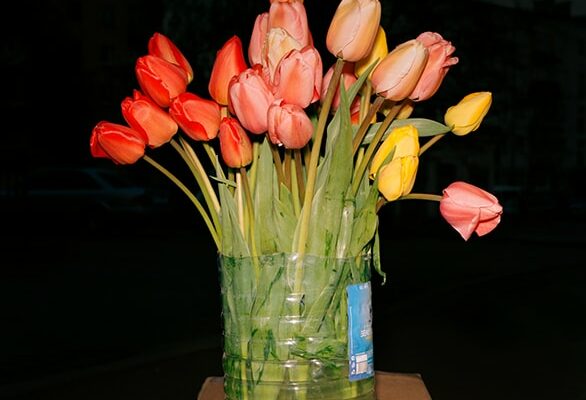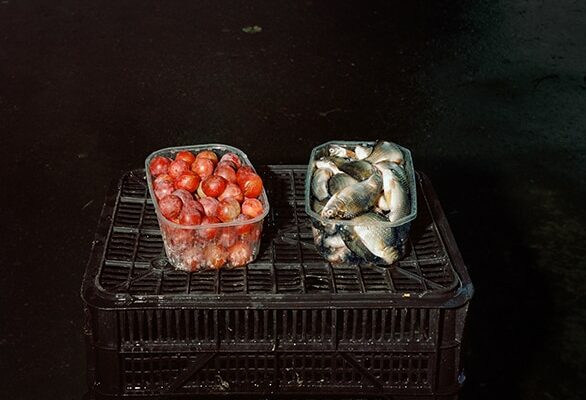Lia Darjes
Born in 1984, lives and works in Berlin (Germany)
www.liadarjes.com
Tempora Morte (2016)
Three years ago in autumn, the Künstlerhaus Lukas invited me to Kaliningrad for a one-month artist-residency. The Russian exclave between Poland and Lithuania – formerly East Prussia – is an isolated place, a region suffering from underdevelopment that preserves its past in a peculiar way. In this almost hermetically sealed atmosphere, I discovered a visual situation that would not let go of me: Every day, small unofficial markets are created at the roadside, where old women put up for sale the modest harvest of their garden or the nearby forest in order to increase their pensions. You can see three apples, a bundle of currants and two bulbs of garlic on a simple wooden box; at other times of the year, perhaps two glasses of homemade strawberry jam and three beetroots on a camping table, or even dried flounder or little bits of amber on nothing but newspaper.
The aura of the goods and the way they were presented fascinated me so much that I travelled to Kaliningrad four times in 2016 to document them in a still life study. The range of goods reminded me of the classic subjects in the tradition of the baroque market still life, and its simplicity triggered in me the longing for a world without industrialized trade. At the same time, the materiality of the packaging, tables and tablecloths disturbs this overall impression – a seemingly romantic authenticity meets the banality and roughness of everyday life in 21st- century Kaliningrad. Significantly, the perceived recourse to a mythically quiescent time – a kind of simulated memory – only manifests itself for me in the photographs themselves and is not yet present at the moment of photographing.
A group of small-format portraits that I took of the market sellers form a second chapter of the work, or perhaps rather a footnote. In an exhibition, they should always be separated spatially and regarding the overall installation from the still-lifes in order to ensure that they do not weaken the latter’s narrative value. Here too, the significant subjects, i.e. the faces, hands and postures, appear timeless, while the packaging, i.e. the clothing, again refers to ‘today’. With Tempora Morte, I am interested in finding out how the still life genre can be positioned today by means of classic references. I want to explore the aesthetic interplay between reference and document.
